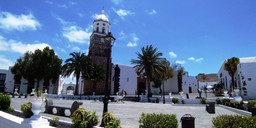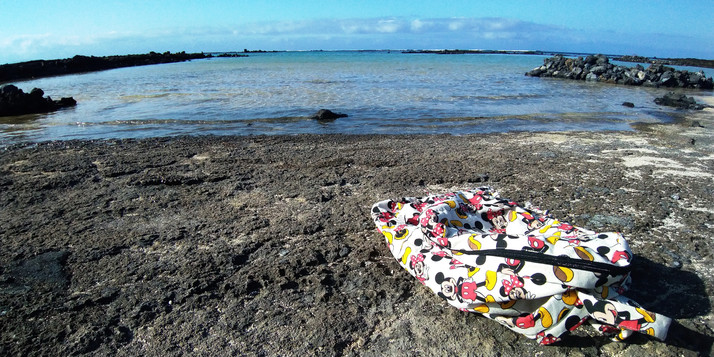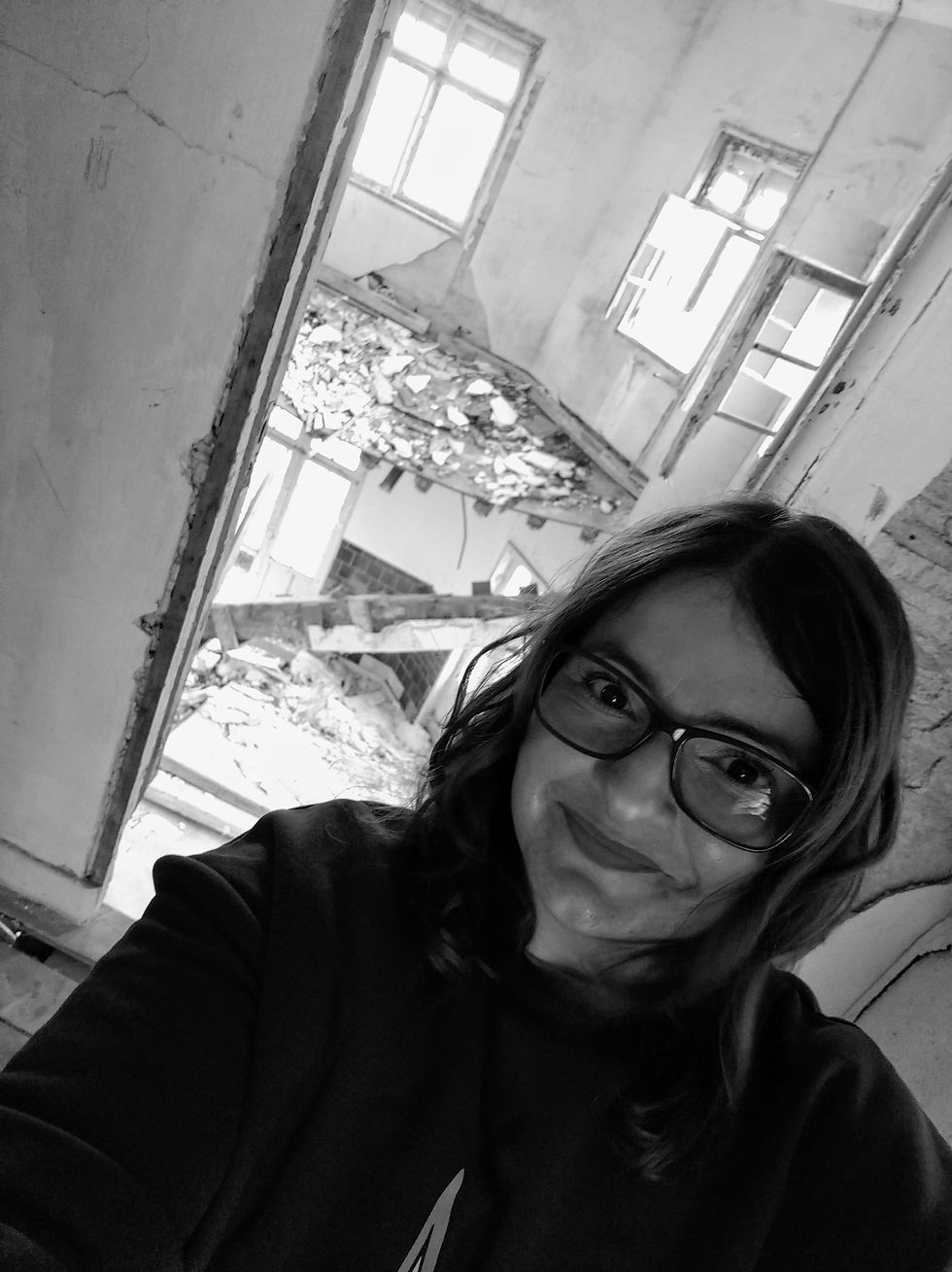Exploring Lanzarote - Part III
- soniamelodias

- Jan 31, 2019
- 4 min read
Our 2nd day of exploration of the Island of Lanzarote was as ambitious as the 1st and it started at the Timanfaya National Park.
The Timanfaya Volcano Park - Montañas del Fuego is the most popular tourist attraction on the island.
On that day, we would, for the first time, have contact with the work of César Manrique, the native architect of the island, responsible for many of the tourist attractions we were scheduled to visit.
"Lanzarote is like an unframed, unmounted work of art - and I hung it up and held it up for all to see"
César Manrique
It is difficult to define what Manrique was, because his work had several facets: painter, sculptor, architect, interior decorator... But the most interesting aspect about him was the way he combined art and nature in a perfect symbiosis, creating an incredible effect.
He came up with the optimal route to explore the landscape of the Timanfaya Volcano Park and he also designed the El Diablo restaurant, which offers excellent panoramic views.
The landscape of the park is often equated with the lunar landscape, but, in fact, allows us to imagine our own planet Earth when it was formed. It's been around 300 years since the volcanic eruption and the landscape remains unchanged, as visitors can not wander around the park, except in the vehicles driven by the guides.
In addition, this volcanic habitat is in the early stages of ecological succession, in what concerns plants and animals, so it is an excellent site for the study of colonization and succession processes. I imagine that, for scientists, it´s an unique opportunity to observe evolution. It is the indisputable proof of how our planet has evolved, of how life always finds a way. It's simply mind-blowing. The ticket price is 10 eur / person and well worth it!
Also, for the most skeptical, demonstrations are held that prove the volcano remains active:
Visiting the Timanfaya National Park, for me, was equivalent to time traveling.The sensation is indescribable. It is beauty in its most basic and primary form, untouched by man or his brutality and destructiveness.
Next stop: Monumento & Museo del Campesino. This monument, also designed by Manrique, intends to pay homage to the resilience of the island's farmers and its rural past. A visit to this place allows you to see the arts and traditions of Lanzarote.
The location of the monument is signaled by the 15 m sculpture called "Fecundidad", designed by Manrique. From the monument there is a path leading to the Casa-Museo, a full-scale reconstruction of a typical farmhouse from the past, which shows how the rural dwellers lived. The visit to this place is free of charge.
We headed out to Teguise that was the capital of the Island of Lanzarote for centuries, until losing the title to Arrecife. There, on Sundays, is held a famous market. In architectural terms, this city is quite worth the visited, because here are the most historic buildings.
And, decidedly, it's a beautiful city, at least, that is my assessment. It´s totally different from Arrecife, a dull, cold, depersonalized metropolis. Here the buildings are inspiring, picturesque and you can sense the weight of history.
I loved this little town!
We left Teguise and headed for Playa Famara. Some people consider Papagayo the most beautiful beaches on the Island, while others believe that the title belongs to Playa Famara.
Located in the Northwest of the Island of Lanzarote, this beach is surrounded by dramatic cliffs, hence its peculiar beauty. It can reach 8 km of lengh, depending on the tides.
But I didn't find it as amazing as Playa Papagayo. It's as they say: " beauty is in the eye of the beholder "!
The day was still half way through, there was much to discover and wonderful surprises awaited us. One of them was Punta Mujeres.
In a fishing village of white houses that conserve its traditional look we found magnificent natural sea water pools. The influence of man is only visible on some occasional stairs and small areas whose purpose is to allow people to bathe in the sun. The rest is pure nature garnished with salt. Communion with the sea and the sun is wonderfully appeasing and rejuvenating, there is nothing remotely comparable.
Simply beautiful, completely off the beaten path and not to be missed!
The Jameos del Agua are part of a 6 km lava tunnel formed 4,000 years ago when the La Corona Mountain erupted. Jameos are large openings in the tube formed due to collapses caused by the pressure derived from the volcanic gases.
Once again, Manrique's work is present, merging art and nature, creating a unique cultural attraction. Rita Heyworth, the movie star, considered this to be the 8th wonder of the world.
Here we find a peculiar and unique species of blind albino crabs known as "Jameitos", which are truly admirable and a strange peculiarity: a pool that can only be used by the King of Spain. Admission costs 7,6 eur / person.
The last work of Manrique that we visited was,for me, decidedly the most spectacular!
I really liked the Jameos del Agua, especially of discovering an unique species in the world, the blind albino crabs, but the Mirador del Rio, despite the upsetting wind is quite overwhelming.
It is, above all, an incredible architectural creation, a unique building that completely integrates into the landscape that surrounds it. From here we can see Isla la Graciosa and enjoy fascinating panoramic views almost 500 m high. It costs 4.75 eur / person.
The last stop before returning to the Hotel on the 2nd day was on the amazing beaches of Caleton Blanco.
Without any doubt my favorite beach: turquoise warm water; fine soft white sand; peaceful quiet environment; idyllic heavenly setting. This characteristics please even the most demanding ️like me!
































































































































































Comments